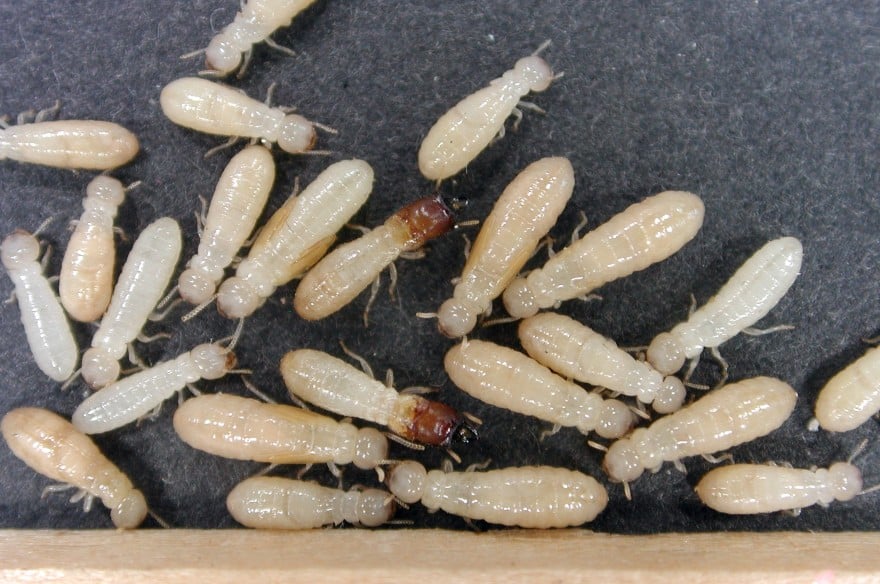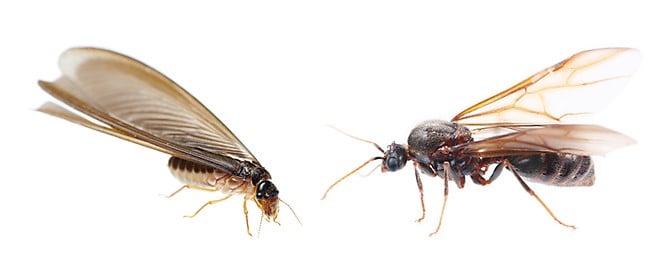I often hear the question “How come that I have a termite infestation?” That is why I want to give you detailed information about these insects by answering all possible questions that these destroyers provoke.
I suppose most people know that termites are 3-part (head, thorax, abdomen) 6-legged insects with two paired wings. Despite the similarity to ants, termites’ nearest relatives are cockroaches. The approximate length of common termite is 5-6 mm, its wings’ length is 8 mm. They live in a colony that is well-organized thanks to a caste system.
Termites “society” casts are defined by the size and function. There is a king, a queen, secondary and tertiary queens, soldiers, and workers. Thanks to such a system, termites reproduce and spread very fast. Only 3 106 species have been studied and a few hundreds more are still waiting to be described.
I want to focus on subterranean termites because this is the most destructive termite species in the world that is found almost in all states of America except Alaska.
What are Subterranean Termites? (Buyer’s Guide and FAQ)
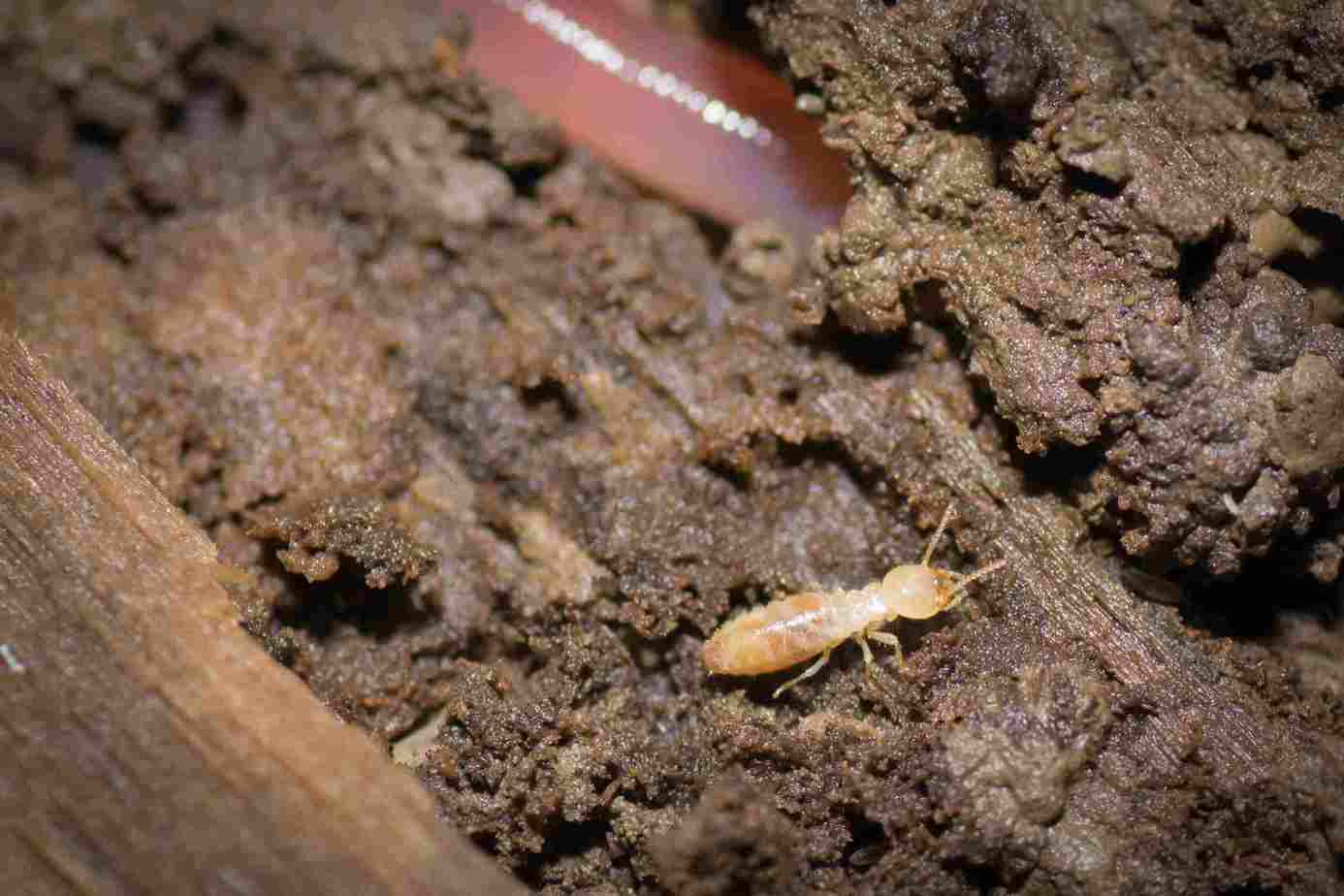
Subterranean termites are called the most costly insect. Economic researches show that house owners all over the USA spend more than two billion dollars on subterranean termites control annually. If you want to save your money for more pleasant things, you should know what do subterranean termites look like and their behavior.
There are three stages of development in a termite life: egg, nymph and adult stages.
Eggs are white or light brown jelly ovoids. They look a bit like caviar but are way smaller.
The nymph size is less than 1/10 of an inch. Nymphs are soft, colorless baby-termites that in two weeks will become workers, soldiers, or reproductives.
Any adult termite belongs to a certain caste. 90 to 98 percent of the colony is formed by workers. They are usually around ¼ inch long. They have no pigmentation, so their color is pale cream. Workers’ functions are to find food, build tunnels, take care of the eggs and nymphs.
Soldiers are of the same size as workers. The most prominent difference between them is a big head of a darker color. Their head is as long as the body with heavy black jaws. The soldiers are responsible for the defense from such invaders like ants.
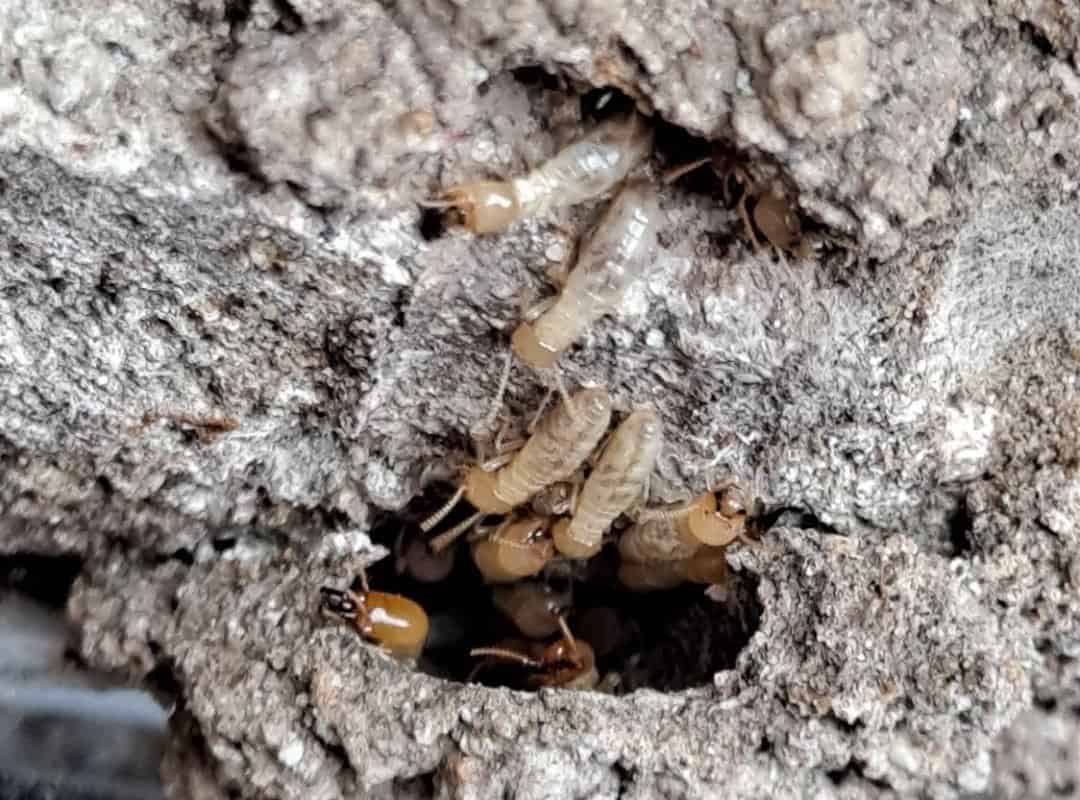
Reproductives are the core of any colony. Primary reproductives, the queen and king, leave the colony they were born in to form a new one. After pairing, they fall back to the ground, throw off their wings, and try to establish a new colony by laying eggs. The queen may produce thousands of eggs per day.
The secondary and tertiary reproductives occur in well-developed colonies. Their main functions are to lay eggs and continue the colony if the queen dies. They also may form a new colony not far from their native one.
The swarmers are the winged reproductives, potential queens and kings. They are the only members of the colony that have eyes. They can grow half an inch in size. Because of the black color and transparent wings, subterranean termite swarmers are often confused with flying ants.
Subterranean Termites vs Flying Ants
| Termite | Ant | |
| Head: | Antennae are straight. | Antennae are elbowed and segmented. |
| Body: | Don’t have the waist construction. their parts are united smoothly. | Reminds an hourglass because of the construction between the thorax and the abdomen. |
| Wings: | Both pairs of wings are identical in size. They are milky-white or grayish with many fine, conspicuous veins. Wings are longer than the body. | The forewings of ants are larger than the hindwings. They are transparent or brownish with few dark, conspicuous veins. The forewings are much larger than the rear wings and are not easily detached. |
How do Subterranean Termites Appear in Your Ground/Garden/House?
Usually, subterranean termites appear in someone’s property as swarmers in April and May. They are flying from the nearest colonies, but neither you nor your neighbors may know about the parent colony before it gets large enough to produce swarmers.
Termites live in the ground, so their colony may be under your garden or house. They may invade your through cracks in foundation or building material.
Why are Subterranean Termites Dangerous?
Termites literally eat wood from inside. Workers’ tunnels may be spread inside your wooden wall, resulting in multiple holes. They can ruin anything that contains cellulose, e.g. tree stumps, paper, books, frames, shelves, furniture, and any other wooden thing.
Termites are keen on moist or decayed wood, therefore the most damage is usually found in areas around structural or plumbing leaks.
How to Identify You Have Subterranean Termites in the Ground?
If you have one of these signs of subterranean termite infestation, your property is in danger:
- presence of swarmers;
- 1/4 to 1/2 inch wide mud tubes on the foundation walls;
- mud protruding from cracks in wooden objects;
- hollows in walls, floor, furniture that can be located by tapping;
- the softness of wooden surfaces identified with a knife;
- small holes may be indicators of workers tunnels, or soldiers bites.
How to Get Rid of Subterranean Termites?
- Identify the place of termites concentration.
- Choose the product of liquidation. It may be a termite station with bait, granules, insecticide, or fumigation.
- Protect yourself before applying the trait. Wear gloves, long-sleeved shirts and high gardening boots.
- Put the control product according to its instruction.
- Be careful with chemicals.
- Keep children away.
How to Prepare your Property for Subterranean Termite Treatment?

Follow this checklist to prepare your home for a termite treatment:
- Empty all wooden cupboards, shelves, etc.
- Take off pictures and photos from the walls.
- Clean the attic and basement.
- Trim plants that are too close to the house.
The main rule in preparation for chemical treatment is clearness and safeness. Localize the place for chemical processing in a room with a good ventilation system or outside. This will help to prevent chemicals from spreading and save your nasopharynx from intoxication.
How to Treat Subterranean Termites?
Main termite treatments are:
- Foam. Foam sprays are low in toxicity. They penetrate deep into the wood they’re sprayed on.
- Liquid spray. Termite sprays are usually applied around and underneath the infected item, covering all areas where termites might enter.
- Drill-and-treat application. An insecticide is injected into small holes drilled through the wood into termite tunnels to deliver the treatment directly to the colony.
- Spikes and baits. Such constructions are called termite baits stations. They help via chemical spreading and insects trapping.
The most productive active ingredients in subterranean termite insecticides are:
- Fipronil. It disrupts the central nervous system of termites.
- Imidacloprid. It binds nicotinic receptors in the nervous system, which is fatal for insects.
- Hexaflumuron. It disrupts a termite ability to grow the exoskeleton.
Chemical-based traps and sprays fatal ingredients might transfer around the colony up to the queen. But don’t forget that secondary reproductives may continue the colonies’ life. Continue treatment according to the manual.
Top 5 Subterranean Termite Treatments
1. How to Get Rid of Subterranean Termites With the Control Solutions 82003599 Taurus SC Termiticide/Insecticide?
[amazon box=”B0058DH4R6″ template=”vertical” tracking_id=”how-to-get-rid-of-subterranean-termites-20″]
Taurus SC is a 9.1% Fipronil insecticide. It is the first pattern product of the Control Solutions company. For an effective result, use it for up to 4 times a year. The Taurus SC keeps almost all insects away from the house. All you need is to spray the perimeter of your house and yard.
I advise you to spray it about 1.5 feet high on the outside wall and about 1.5 feet on the yard around.
| Pros: | Cons: |
|
|
2. Treating Subterranean Termites With The Spectracide Terminate Termite Detection & Killing Stakes2
[amazon box=”B00AA8WVLI” template=”vertical” tracking_id=”how-to-get-rid-of-subterranean-termites-20″ button_text=”Check price on Amazon”]
Specifications:
- Active Ingredient: Hexaflumuron 0.50%
- Material: Plastic
- Number of Pieces: 15
- Item Weight: 2 pounds
- Item Dimensions LxWxH: 4 x 12 x 16 inches
- Target Species: Ants, Termites
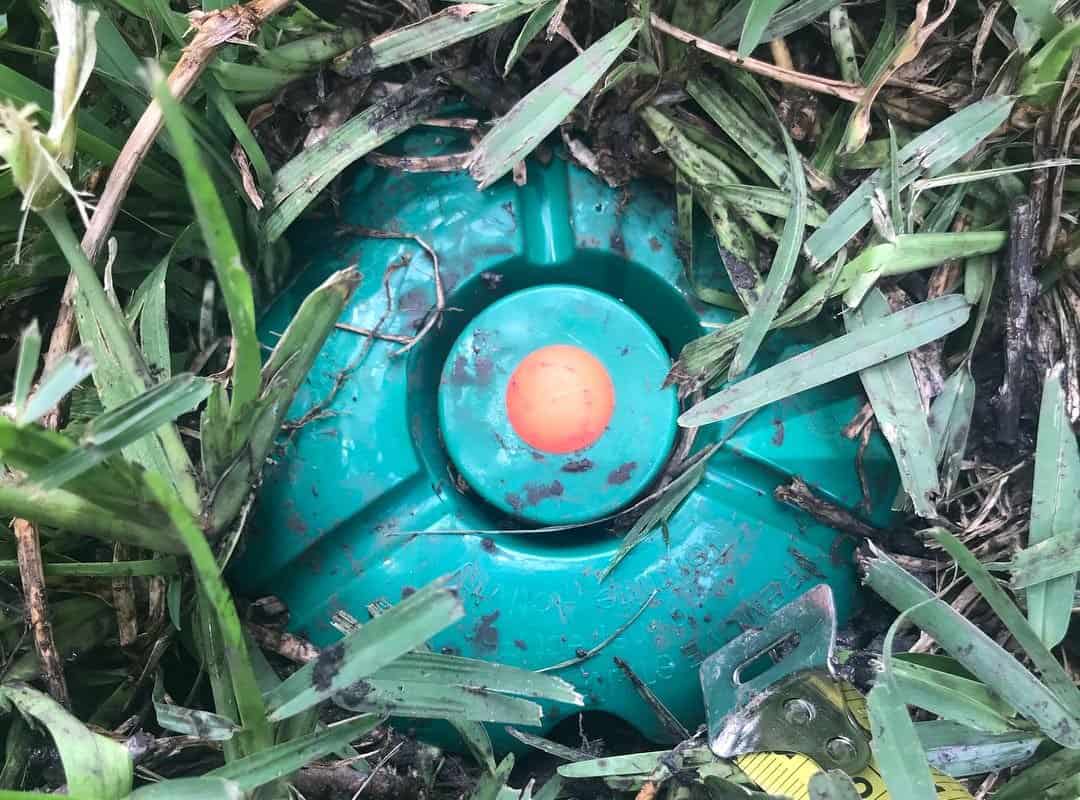
These umbrella-like stakes help to:
- indicate whether you have termites;
- check the stakes on the sights of termites’ presence, for example, tiny holes in it or mud tunnels. If the trap is full of insects, an orange indicator will pop up. It helps to monitor when it is time to change;
- kill workers.
The kit includes 3 packs of 5 stakes, a user manual and a digging tool. So, it has everything you need for immediate use.
Dig it 2-3 feet away from the home and no more than 10 feet in between.
| Pros: | Cons: |
|
|
3. Learn How to Kill Subterranean Termites With The BioAdvanced 700350A Termite Killer Home Perimeter Treatment Ready-to-Spread Granules
[amazon box=”B000RUIJYM” template=”vertical” tracking_id=”how-to-get-rid-of-subterranean-termites-20″ button_text=”Check price on Amazon”]
Specifications:
- Active Ingredient: Imidacloprid 0.37%
- Item Form: Granules
- Item Weight: 9 pounds
- Item Dimensions LxWxH: 6 x 9.9 x 12 inches
- Target Species: Ants, Termites
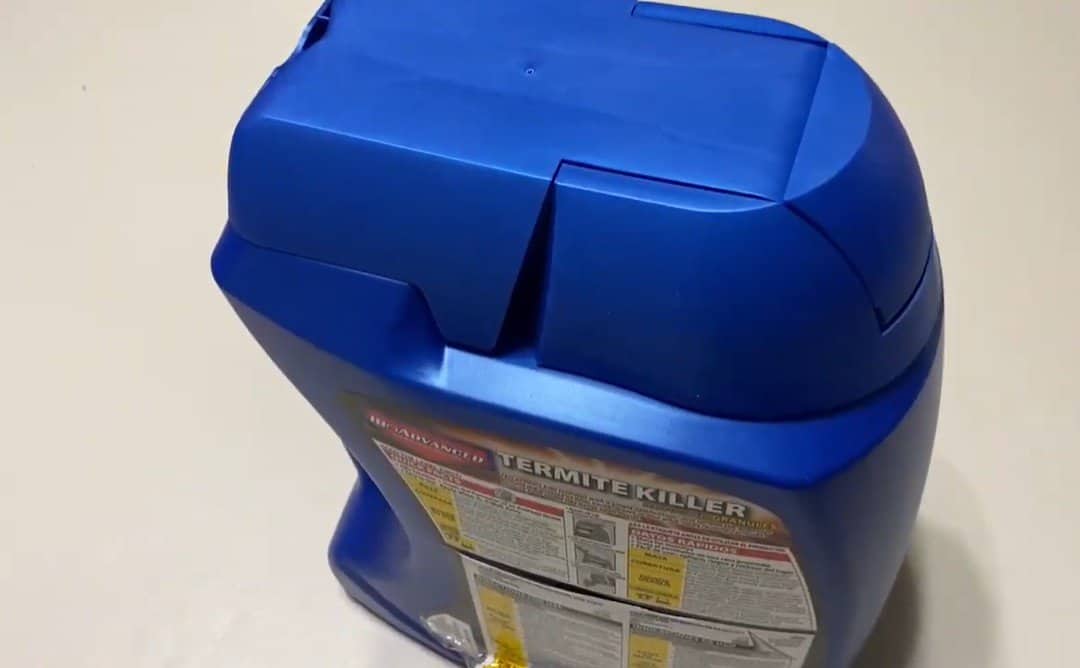
BioAdvanced Granules’ active ingredient is the imidacloprid. It kills the termites that come into contact with the insecticide. The 9 lbs bottle has a special applicator on the upper side. The built-in spout pours granules in a 6-inches wide band.
The usage procedure is:
- Open the container;
- Springle the granules;
- Make a 6-inches wide band around the treated object;
- Water until moist.
| Pros: | Cons: |
|
|
4. Control Solutions Inc 82004505 Permethrin SFR Termiticide/Insecticide for Subterranean Termites Control
[amazon box=”B0048EY6KY” template=”vertical” tracking_id=”how-to-get-rid-of-subterranean-termites-20″]
Permethrin SFR is an insecticide with permethrin 36.8% as an active ingredient. It can be used as pre- and post- termites treatment.
Despite the chemical composition, the Permethrin SFR is safe to use around animal houses, including poultry houses. It comes in a 32 oz bottle with the instruction booklet. You will find the detailed fixture formula in the booklet.
| Pros: | Cons: |
|
|
5. How to Treat Ground Termites Effectively With The Trelona Compressed Tehrmite Bait?
[amazon box=”B07G1R9137″ template=”vertical” tracking_id=”how-to-get-rid-of-subterranean-termites-20″ button_text=”Check price on Amazon” button_detail=”https://shareasale.com/r.cfm?b=410159&u=2583381&m=43235&urllink=www%2Edomyown%2Ecom%2Ftrelona%2Dcompressed%2Dtermite%2Dbait%2Dbox%2Dcartridges%2Dp%2D17220%2Ehtml&afftrack=how%20to%20get%20rid%20of%20subterranean%20termites” button_detail_text=”Check price on DoMyOwn”]
Specifications:
- Active Ingredient: Novaluron 0.5%
- Item Form: Bait
- Item Weight: 2.25 pounds
- Item Dimensions LxWxH: 8.23 x 6.57 x 2.52 inches
- Target Species: Subterranean Termites
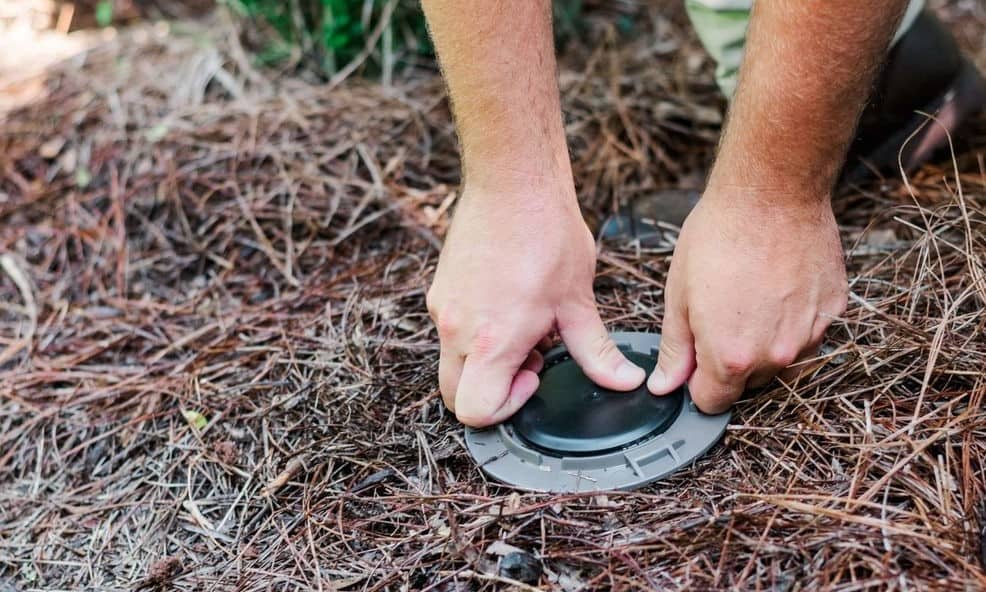
Trelona’s privilege is in its chemical composition. It attracts the workers to eat the bait — a novaluron. It diminished the ability of insects to grow an exoskeleton. Thus termites will die or lose the ability to molt.
Whatever the eventual damage to the invaders is, it results in the decrease of the colony and, after continuous usage, in the total elimination of it.
Trelona offers a compressed termite bait. It comes in a box with 6 bait cartridges for a termite bait station. Each cartridge is cylindrical (3 inches high, 2.5 inches in diameter). Apply the bait in your stations. It should be placed at least 3 feet from the house foundation. The distance between bait stations should be less than 20 feet.
| Pros: | Cons: |
|
|
How to Prevent Subterranean Termites in the Future?
If you want to prevent termites’ destruction in the future, the best way is to focus on treatment implementation during the construction of your building. Plan a solid foundation with extra protection in corners and entrances.
Pay attention to the water pipeline and roof to avoid any possibility of leaking and wood absorption of moisture.
- Remove any cellulose-containing things near your property.
- Provide adequate ventilation to prevent moisture.
- Fix leaks immediately.
- Prevent any wood to ground contact.
- Don’t plant anything close to the structure’s foundation or siding.
- Provide proper drainage.
- Have a termite pre-treatment on the stage of building a house.
FAQ
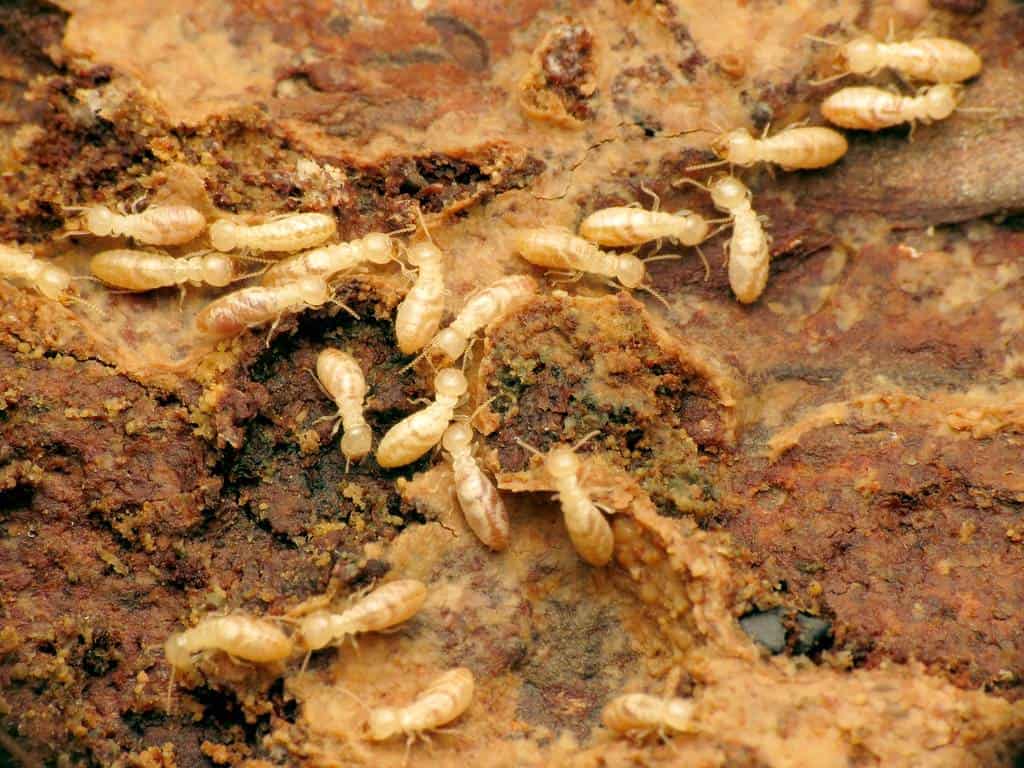
Is It Hard to Get Rid of Termites?
It is quite challenging to get rid of termites. Thus, it’s better to think about protection at the building stage. Follow termites and pest control advice in your state, country or city.
Can Termites Be Transferred From House to House?
Termites may be transferred from house to house with the infected wooden things . Also, if houses are very close to each other, the workers from one colony may invade them both.
Related Post: How to Get Rid of Drywood Termites
Do Termites Come Back After Treatment?
Yes, they may come back. If they find even a small gap in your chemical barrier, they will continue to eat your house. That’s why some pest control firms give a one year warranty.
How Deep Do Termites Go Into the Ground?
The termites can go up to 20 feet into the ground.

Make Getting Rid of Subterranean Termites Easier
Let me remind you once again that the subterranean termite is one of the most destructive species in the world. It can be found in the USA, Japan, China, South Africa, Sri Lanka and Taiwan. If you do not forget to check your property on invasion signs (such as holes, shavings, mud, external tunnels on the foundation, etc) and pay attention to flying beasts in April and May, you may prevent spreading on the initial stages.
I strongly recommend using termites treatment products from my top list. Perhaps you have tried some other things and could recommend them. Let’s make a rating of all known killing-termites devices in comments.
References:
- Termites: Biology, Prevention, and Control(By Arthur L. Antonelli, Ph.D., Extension Entomologist, WSU Puyallup):
http://owic.oregonstate.edu/sites/default/files/pubs/termites.pdf - Termite Biology (Mississippi State University):
http://extension.msstate.edu/content/termite-biology-eastern-subterranean-termites-and-formosan-termites - Definition of Nasopharynx (National Cancer Institute):
https://www.cancer.gov/publications/dictionaries/cancer-terms/def/nasopharynx - Subterranean Termite Treatment Options(Virginia State University):
https://www.pubs.ext.vt.edu/444/444-500/444-500.html - Termites and pest control (Government of Western Australia):
https://www.commerce.wa.gov.au/consumer-protection/termites-and-pest-control

